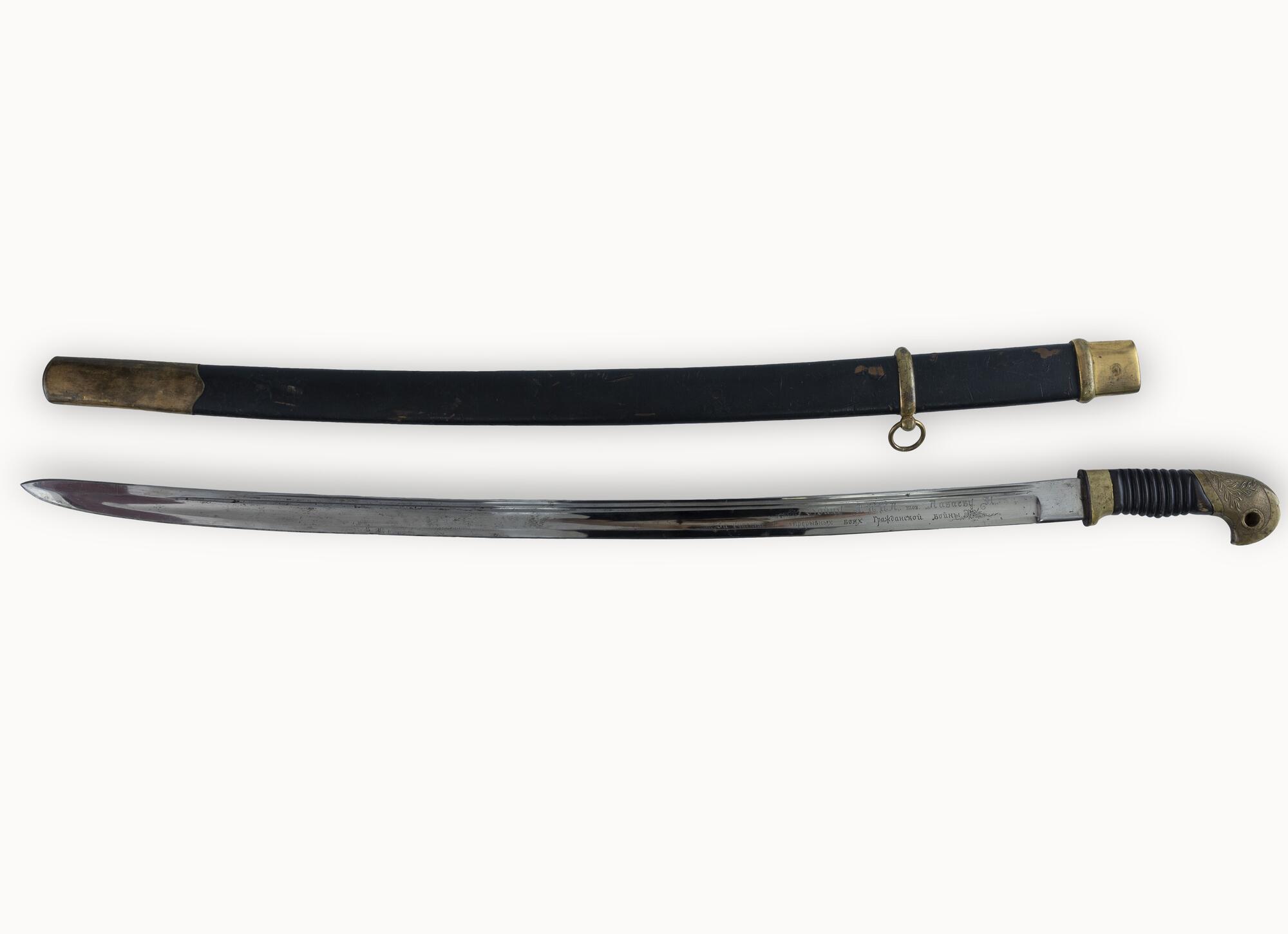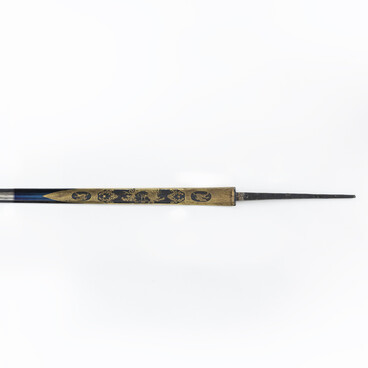Making weapons for the needs of the army was not the only area of activity of the Zlatoust Arms Factory. Equally important was the manufacture of decorated weapons, which served as an honorary award for high-ranking officials of the state, glorious military commanders and foreign guests of the imperial court.
As a rule, such products were made on official government orders. The first weapon decorators were the craftsmen from the city of Solingen — father and son the Schaafs. Since 1818, all weapons were decorated by Russian artists.
In the years following the 1917 revolution, the factory continued such activities: they mostly adorned small decorative hatchets, paper knives, cutlery, and personalized gift weapons. The officer’s Cossack saber with a scabbard of the 1881/1910 model is one of the examples of gift weapons that were created by the Zlatoust Arms Factory as an honorary award for commanders and officers who distinguished themselves on the battlefields.
In 1925, by the decision of the city council of Zlatoust, Nikolay Mikhailovich Lobayev, a participant in the Civil War, was awarded this sword. During the war, he commanded a Red Army battalion. Lobayev fought fiercely against counter-revolutionary forces, participated in the armed uprising in Petrograd in 1917, and in the disarming of the headquarters train of the 1st Czech regiment at the Zlatoust railway station on May 27, 1918.
The sword blade was made of steel; it is almost straight, with three fullers. The hilt was made of a bronze pommel and bushing. The handle is made of wood. The scabbard was also made of wood and covered with leather. In addition, the scabbard was furnished with a set of fittings — a throat, a nut and a chape.
The butt has a stamp stating: “Zlat. Arms Fact.”. The flats (sides) of the blade feature etched inscriptions: “To the fighter of the Red Army Comrade N. Lobayev for participation in the continuous battles of the civil war. From the Zlatoust City Council on the 7th anniversary of the Red Army.” A five-pointed star in a wreath of ears of wheat and the letters “USSR” framed by a floral ornament were also carved by needle engraving.
As a rule, such products were made on official government orders. The first weapon decorators were the craftsmen from the city of Solingen — father and son the Schaafs. Since 1818, all weapons were decorated by Russian artists.
In the years following the 1917 revolution, the factory continued such activities: they mostly adorned small decorative hatchets, paper knives, cutlery, and personalized gift weapons. The officer’s Cossack saber with a scabbard of the 1881/1910 model is one of the examples of gift weapons that were created by the Zlatoust Arms Factory as an honorary award for commanders and officers who distinguished themselves on the battlefields.
In 1925, by the decision of the city council of Zlatoust, Nikolay Mikhailovich Lobayev, a participant in the Civil War, was awarded this sword. During the war, he commanded a Red Army battalion. Lobayev fought fiercely against counter-revolutionary forces, participated in the armed uprising in Petrograd in 1917, and in the disarming of the headquarters train of the 1st Czech regiment at the Zlatoust railway station on May 27, 1918.
The sword blade was made of steel; it is almost straight, with three fullers. The hilt was made of a bronze pommel and bushing. The handle is made of wood. The scabbard was also made of wood and covered with leather. In addition, the scabbard was furnished with a set of fittings — a throat, a nut and a chape.
The butt has a stamp stating: “Zlat. Arms Fact.”. The flats (sides) of the blade feature etched inscriptions: “To the fighter of the Red Army Comrade N. Lobayev for participation in the continuous battles of the civil war. From the Zlatoust City Council on the 7th anniversary of the Red Army.” A five-pointed star in a wreath of ears of wheat and the letters “USSR” framed by a floral ornament were also carved by needle engraving.






